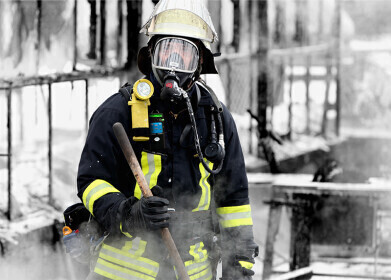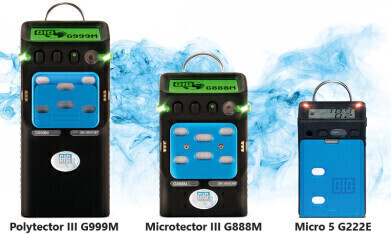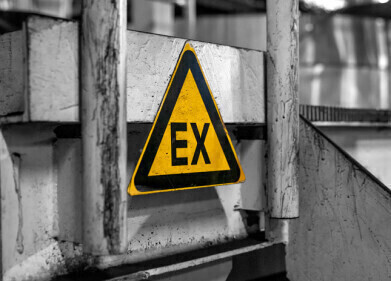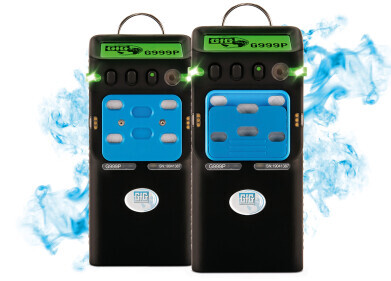Safety
Safety when working in Ex zones
Oct 17 2023
Potentially explosive areas, also called Ex zones or ATEX (fr. ATmosphère EXplosibles) environments, are classified and labelled according to the likelihood of explosive material occurring within them. In regards to combustible gases and vapours, potentially explosive atmospheres are categorized as either Ex zone 2 (“will likely not occur or only rarely, for short amounts of time”), Ex zone 1 (“does occasionally occur”) and Ex zone 0 (“is always present or occurs either for long periods of time or frequently”). Whenever somebody needs to enter these areas, they must adhere to Ex protection regulations. This applies in particular to any electrical devices that are part of their equipment.
What is an Ex zone?
A potentially explosive atmosphere occurs whenever an explosive substance – such as gas, vapour or dust – is present alongside a certain concentration of oxygen (higher than the oxygen limit value). A combustible gas is explosive in concentrations between its specific lower and upper explosion limits. As an example, methane is flammable at any concentration between 4.4 and 17 vol %. A single ignition source is then enough to kindle the gas-oxygen mixture. But obvious hazards, such as open flames, are not the only hazards: even a mechanically or electrically generated spark or a hot surface can be enough to cause an explosion. On the flip side, this means that eliminating only one of these three factors will prevent any danger.
Requirements for gas detectors
The 2014/34/EU ATEX guideline contains regulations on the intended use of equipment and safety systems in potentially explosive areas. Any gas detection instrument intended to be used in Ex zones must be ATEX approved. The devices are categorised according to their device group, fuel type and Ex zone. The label also includes information on the notified body, the ignition protection type as well as temperature classes.
Feeling safe, no matter where you are
Before any task involving explosion protection can begin, the Ex zoning plan – which was prepared in the context of general risk assessment – has to be consulted. Even if you are familiar with the conditions on site, circumstances may change at any time and without warning. It therefore makes sense to equip your workers exclusively with portable gas detectors approved for Ex zone 0: they will not have to worry about which Ex zone they are in at any given moment, won’t have to carry different devices if they have to cross multiple different zones and can thus focus entirely on their task.
If you have any questions about ATEX protection or would like more information on our portable gas detectors, contact one of our specialists today. They are happy to give you a free consultation regarding your specific application.
Digital Edition
PIN 25.3 June/July
June 2024
Analytical Instrumentation - Recent Advances In Various Bench Scale Accelerated Oxidative Testing Methods For Fuels - Petrochemical Industry: Anton Paar Solutions Streamline Processes, Reduce H...
View all digital editions
Events
Jul 30 2024 Jakarta, Indonesia
Jul 30 2024 Jakarta, Indonesia
China Energy Summit & Exhibition
Jul 31 2024 Beijing, China
Jul 31 2024 Chengdu, China
Aug 05 2024 Moon Township, PA, USA




















